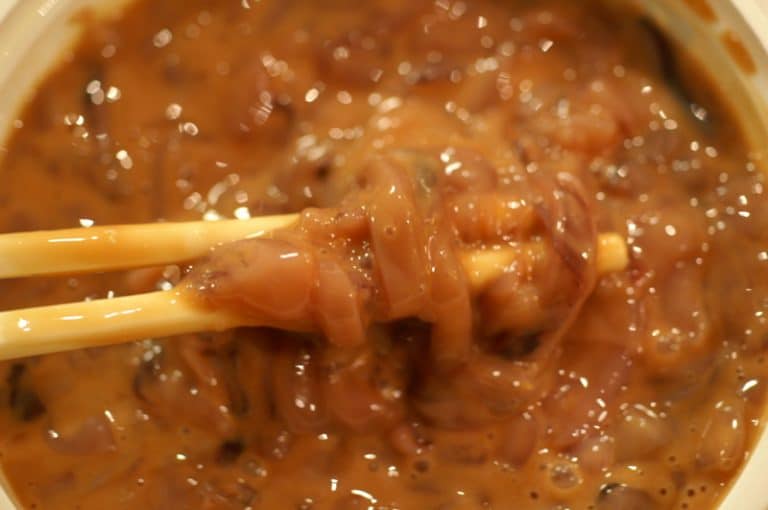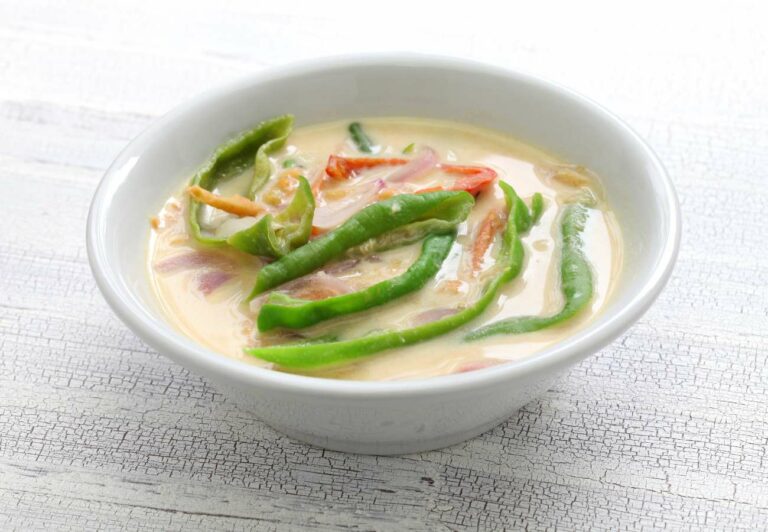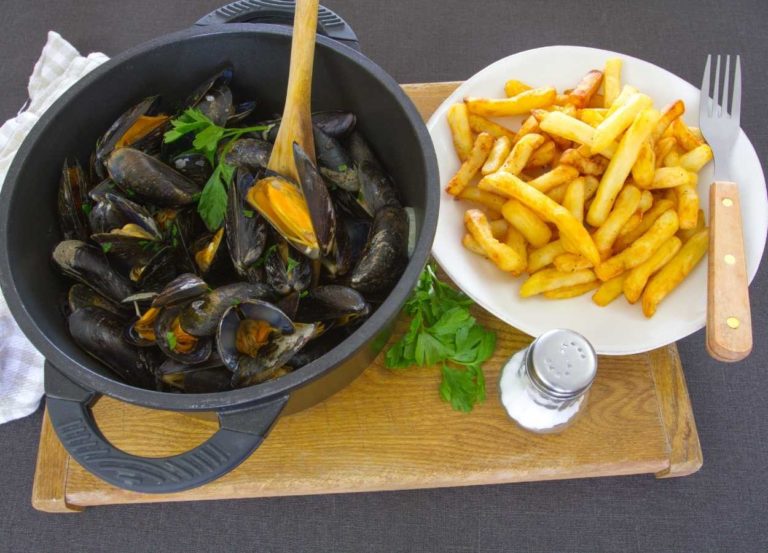Iranian Food: 19 Traditional Dishes of Iran
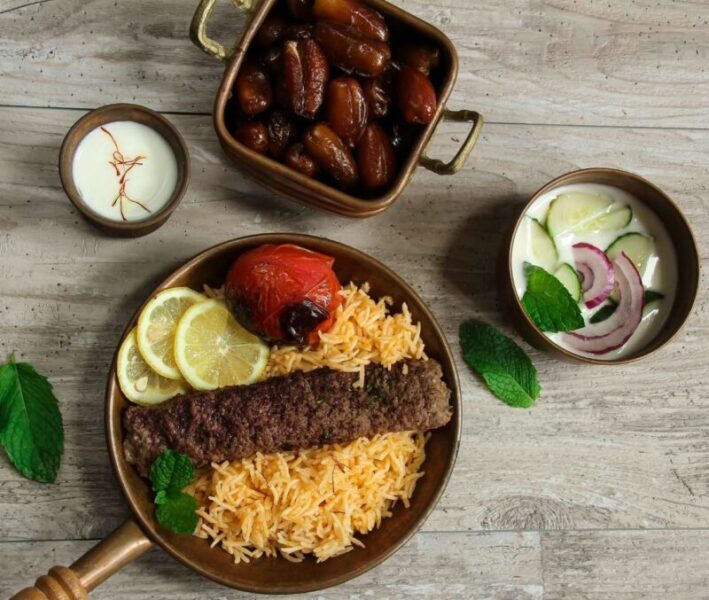
Iran, also known as Persia, is a country in Western Asia in the Middle East, bordered by Iraq, Turkey, Azerbaijan, Armenia, the Caspian Sea, Turkmenistan, Afghanistan, Pakistan, the Gulf of Oman, and the Persian Gulf.
Iran is the fifth-largest country in Asia and is known for being the birthplace of one of the world’s earliest civilizations. Its population is comprised of diverse ethnicities, including Persians (who also happen to be the largest ethnic group of Iran’s population), Azerbaijanis, Kurds, Gilakis, Mazandaranis, Lurs, Arabs, Talysh and Baloch.
Iran certainly has a huge influence from neighboring countries, and in turn exerts influence on its neighbors, when it comes to food. A wide variety of ethnic groups also play a major role in defining the major Iranian delicacies.
Throughout the history of Iranian cuisine, the makeup of popular national dishes have influenced, and been influenced by, bordering countries and regions. There are very clear similarities to be drawn in Caucasian cuisine, Central Asian cuisine, Greek cuisine, Levantine cuisine, Mesopotamian cuisine, Russian cuisine, Turkish cuisine, Indian cuisine, Pakistani cuisine and many more.
Many traditional Iranian dishes consist of staples such as rice with meat, vegetables and nuts. Popular fruits in Iranian cooking include plums, pomegranates, quince, prunes, apricots, and raisins.
Ghormeh Sabzi
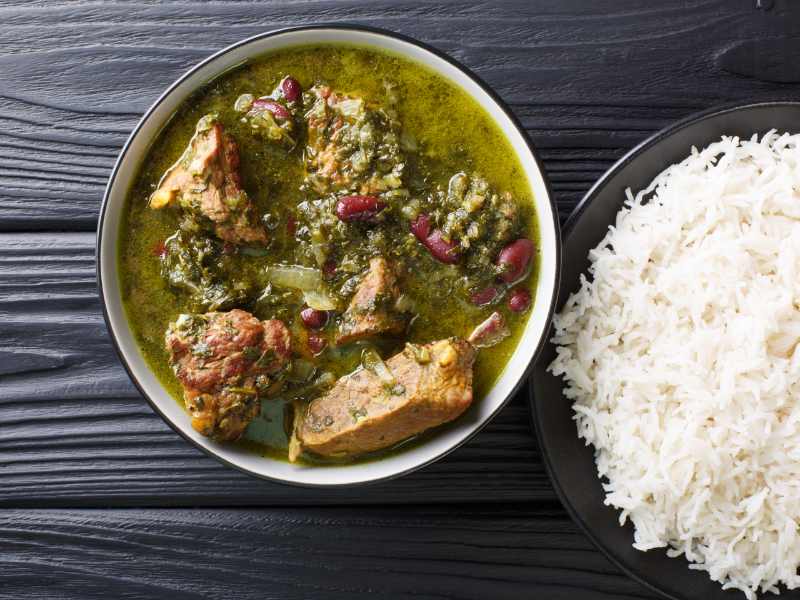
Ghormeh Sabzi is a herb stew prepared using different herbs (which mainly include chopped parsley, cilantro, and chives), kidney beans and lamb. It is often considered to be the national dish of Iran.
Generally served with rice or lavash bread, Ghormeh Sabzi can be prepared in many different ways. Other variations of Ghormeh Sabzi use greens such as leeks, kale or spinach, which help to provide the dish its dark green color and rich taste.
Dizi
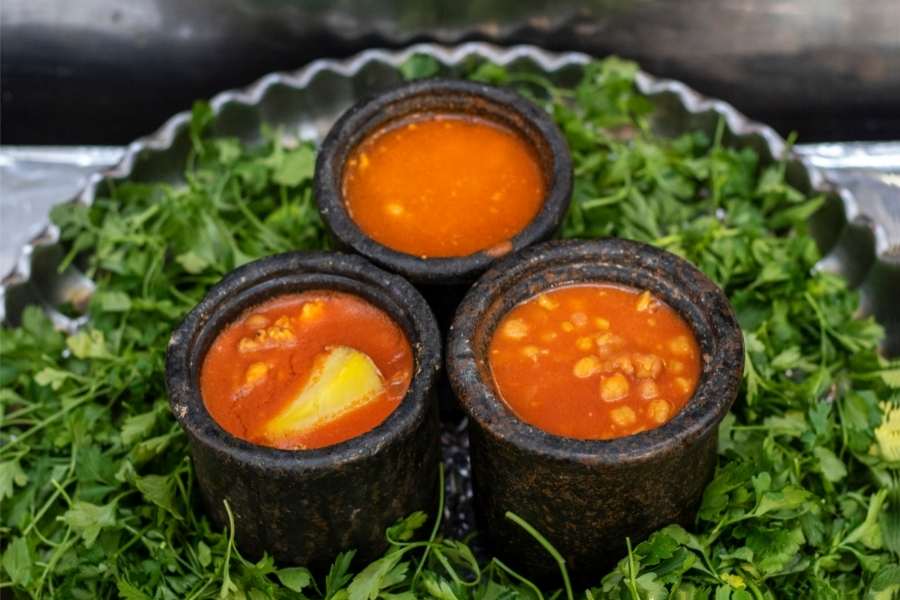
Dizi, also known as ‘Abgoosht’, is a traditional Iranian stew prepared using lamb and chickpeas with a tomato base. Other ingredients include white beans, onion, potatoes, tomatoes, turmeric, and dried lime. It is generally consumed in a stone dish called a dizi, which is where the dish gets its name.
Dating back hundreds of years, dizi was traditionally served in Iran’s tea houses. It is said that dizi was just about enough for workers to sustain themselves through a long day.
Ash Reshteh
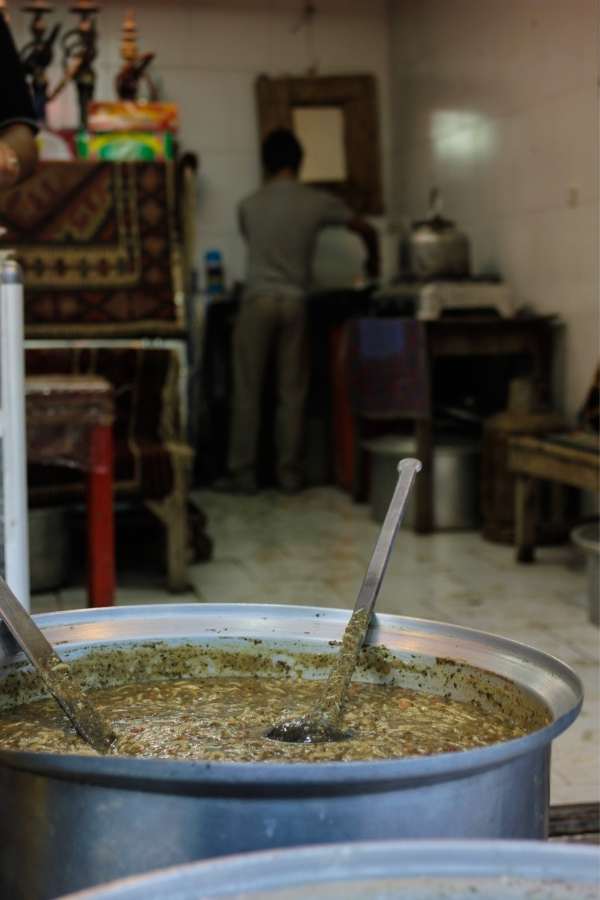
Ash Reshteh is another traditional soup prepared using chickpeas, beans, noodles and a lot of herbs. The dish is a kind of ash (Iranian thick soup) containing reshteh (thin noodles) and kashk (a dairy product, prepared using cooked or dried yogurt).
Although Ash Reshteh is a vegetarian dish, meat can also be added and vegans can enjoy this delicacy by excluding the kashk. Ash Reshteh is traditionally consumed on special occasions in Iran such as Nowruz, Sizdah be-dar, or during winter time. The noodles used in Ash Reshteh believed to signify good fortune for the new year.
Kabab Koobideh
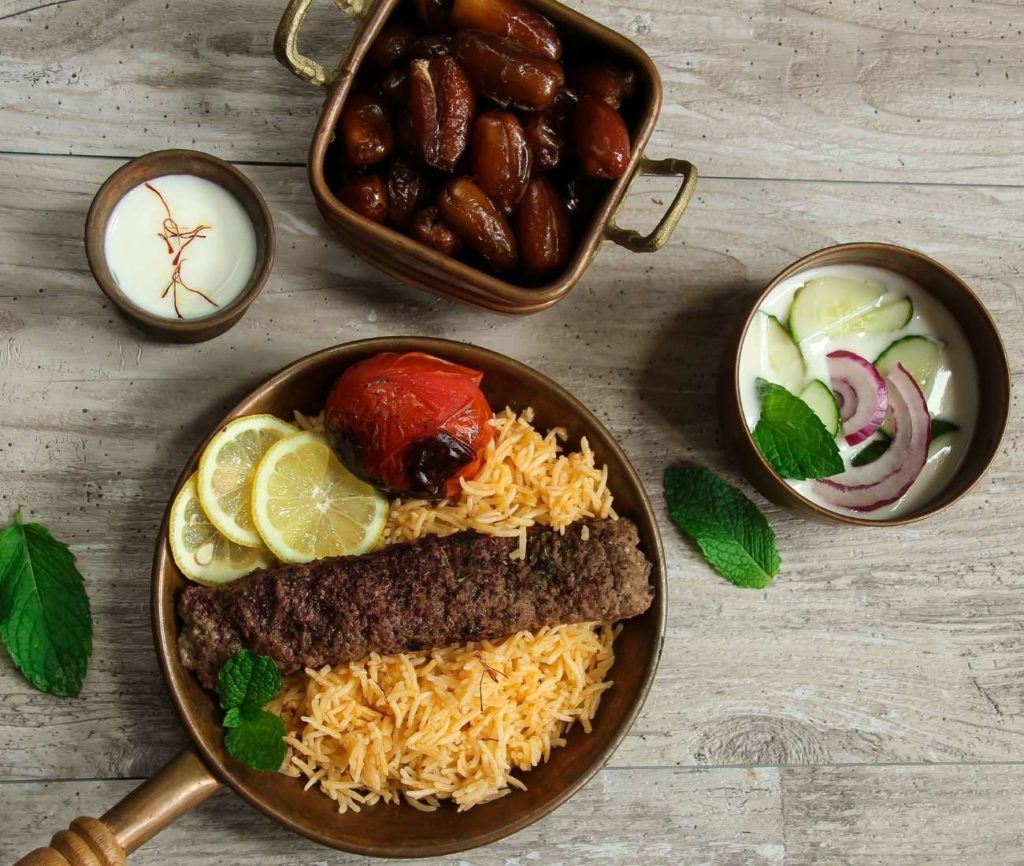
Kabab koobideh, also known as Kobida, is a meat kabab prepared using ground lamb or beef, typically mixed with ground pepper and chopped onions. The word “Koobideh” derives from the Persian word koobidan which means ‘slamming’, referring to the technique that is used to prepare the meat.
Cooked on broad, flat skewers, conventionally over hot coals, kabab koobideh is generally accompanied by chelow (Iranian plain white rice with oil, salt and saffron), and grilled tomatoes and onions are also served alongside the dish.
Khoresh Gheymeh
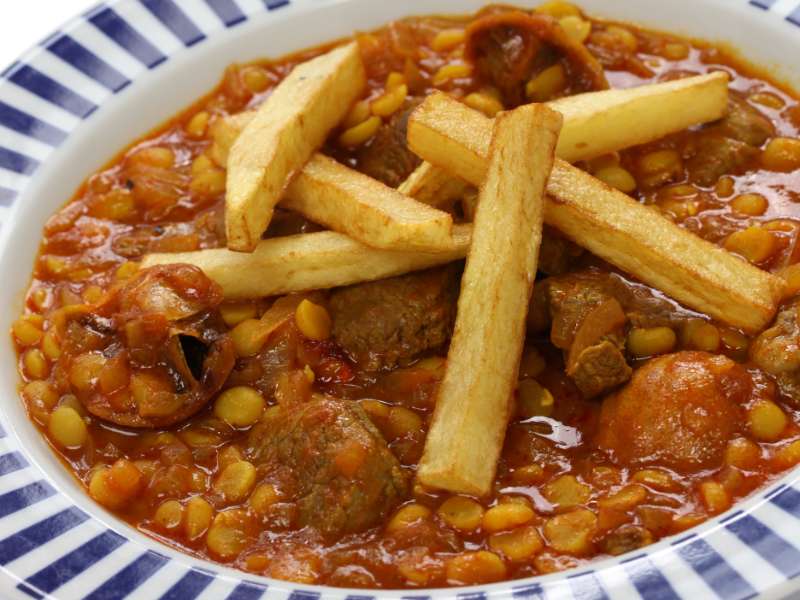
Khoresh Gheymeh is a stew prepared using beef and split peas. The entire dish is cooked in a tomato base and generally topped with fried potatoes and dried limes and served with white or aromatic rice. It is particularly common in the month of Muharram (which is considered to be a sacred month in the Iranian almanac). It is then offered to the needy on the streets.
Zereshk Polo
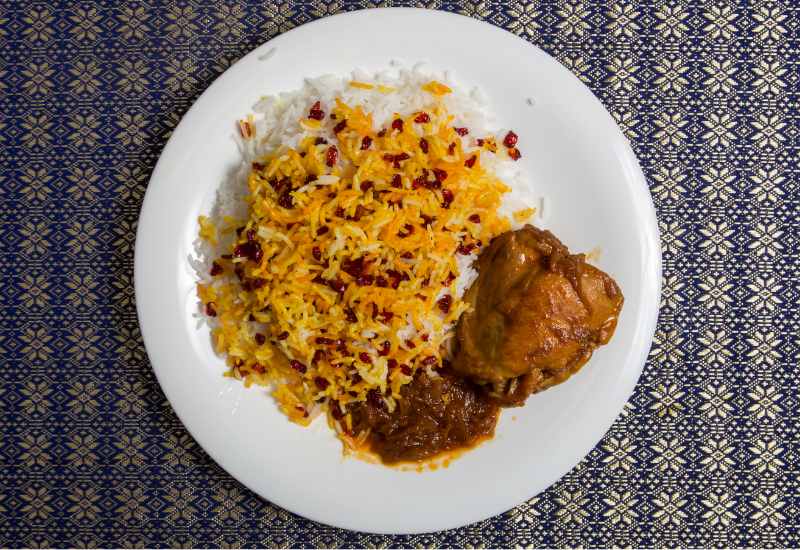
Zereshk Polo is a rice dish generally prepared using saffron, turmeric and barberries, along with a chicken and tomato stew. The barberries that are added are bright red in color and sour in taste, making this dish a perfect blend of taste and aesthetics.
Zereshk Polo, in English, translates to Barberry rice and Morgh simply means chicken which is often added. It is considered to be a fairly simple, regular meal in Iranian households but it is also a staple at many special events such as birthday parties, weddings and even funerals and memorial services.
Fesenjan
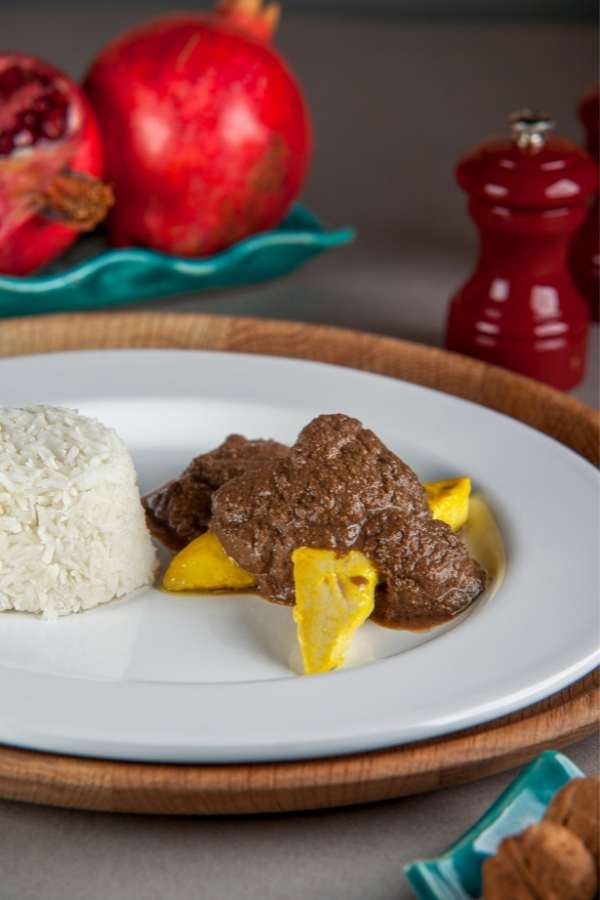
Fesenjan is a type of Iranian stew prepared using walnuts, pomegranate paste and chicken or duck meat. Other ingredients include turmeric, cinnamon and nutmeg. Fesenjan has an unusual sweet-tangy flavor, and is generally accompanied by rice.
Invented in the Gilan region near the Caspian Sea, this Persian delicacy today can frequently be seen served during winters and at wedding ceremonies throughout the country.
Baghali Polo
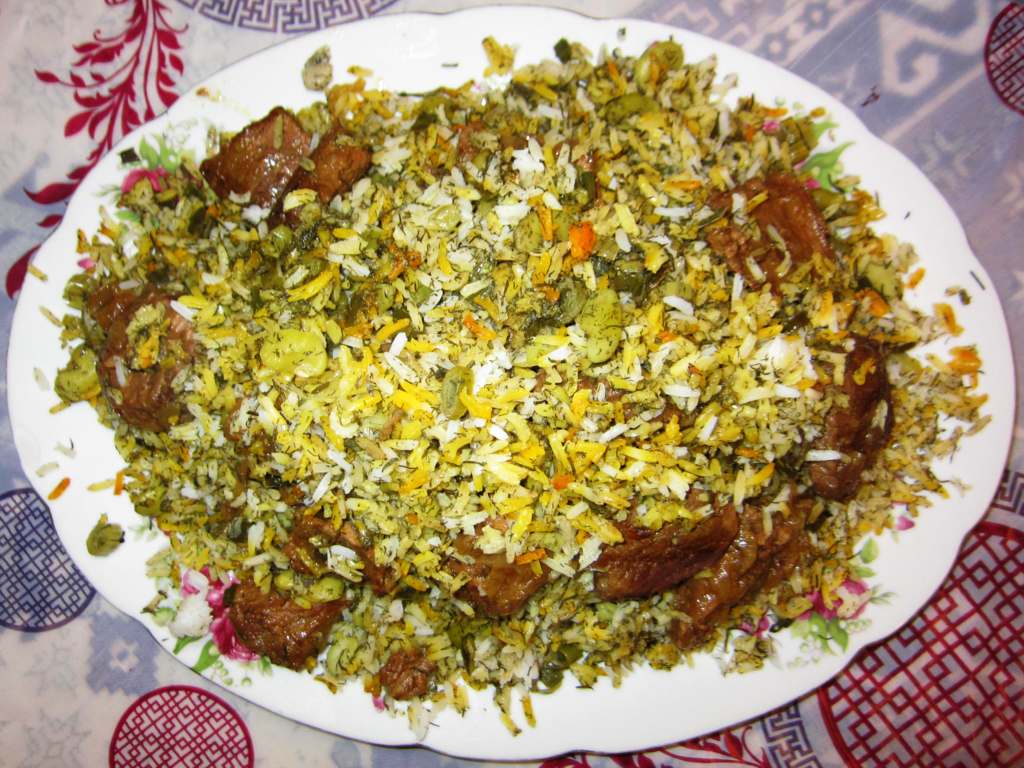
Baghali polo is a rice dish which is prepared using saffron, fava beans and green dill. Generally served with lamb, Baghali polo is considered to be one of the most famous rice dishes in the country.
Baghali in English translates to fava bean and polo means pilaf (a style of cooked rice). Often served as a main dish, Baghali polo is enjoyed most in Iran during spring time.
Tahdig
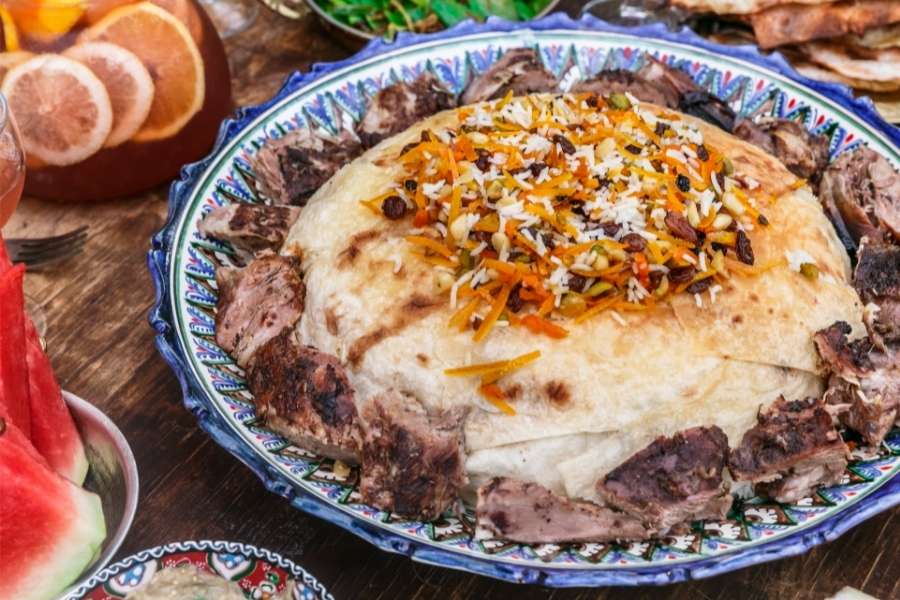
Tahdig is a rice dish prepared using basmati rice, ghee or oil, and salt. One can also add turmeric and saffron for a pleasant color and for additional flavor.
The meaning of the word tahdig is bottom of the pot, which denotes the golden, crunchy layer of rice present at the bottom of the cooking pot. Generally served as a side dish, Tahdig has also has different varieties which include lavash bread, sliced potatoes or yogurt on the bottom of the pot.
Faloodeh
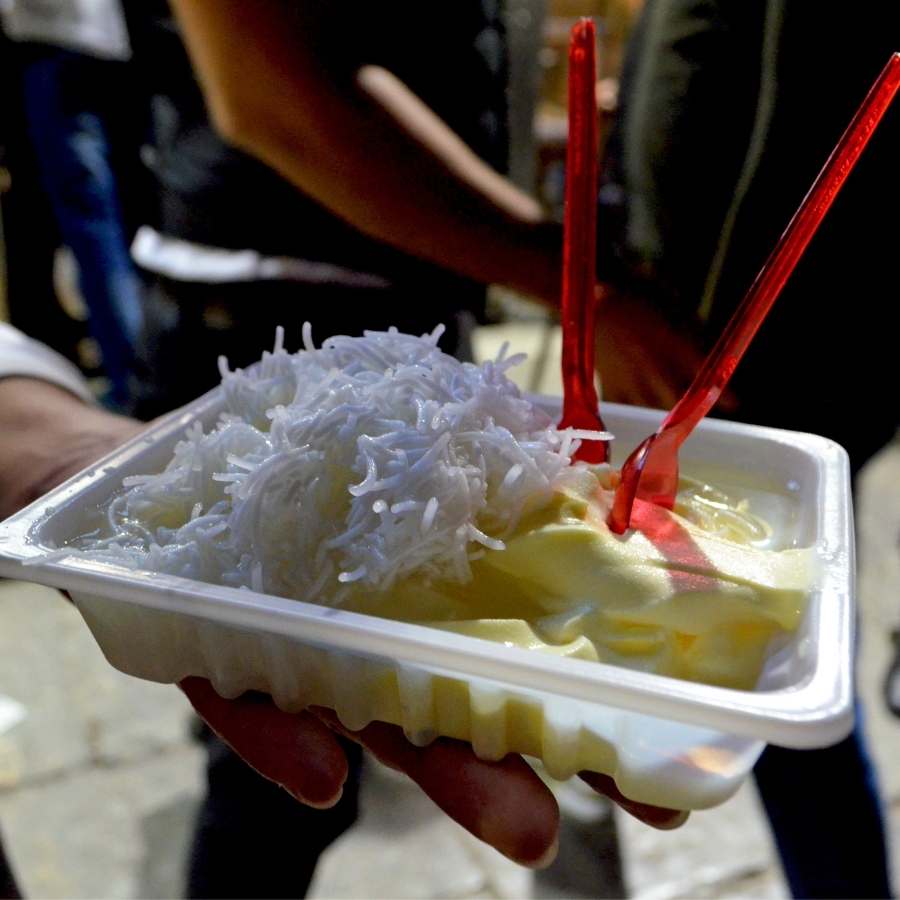
Faloodehis a popular Iranian dessert that is prepared using thin vermicelli noodles which are combined with semi frozen rose water and sugar syrup.
It is believed that faloodeh was invented in Shiraz and is considered to be one of the primary sorbet varieties in the world. Generally served with fresh lime juice sprinkled on top, chopped pistachios or sweet cherry syrup, this dessert is enjoyed as a freshening summer dessert.
Gondi
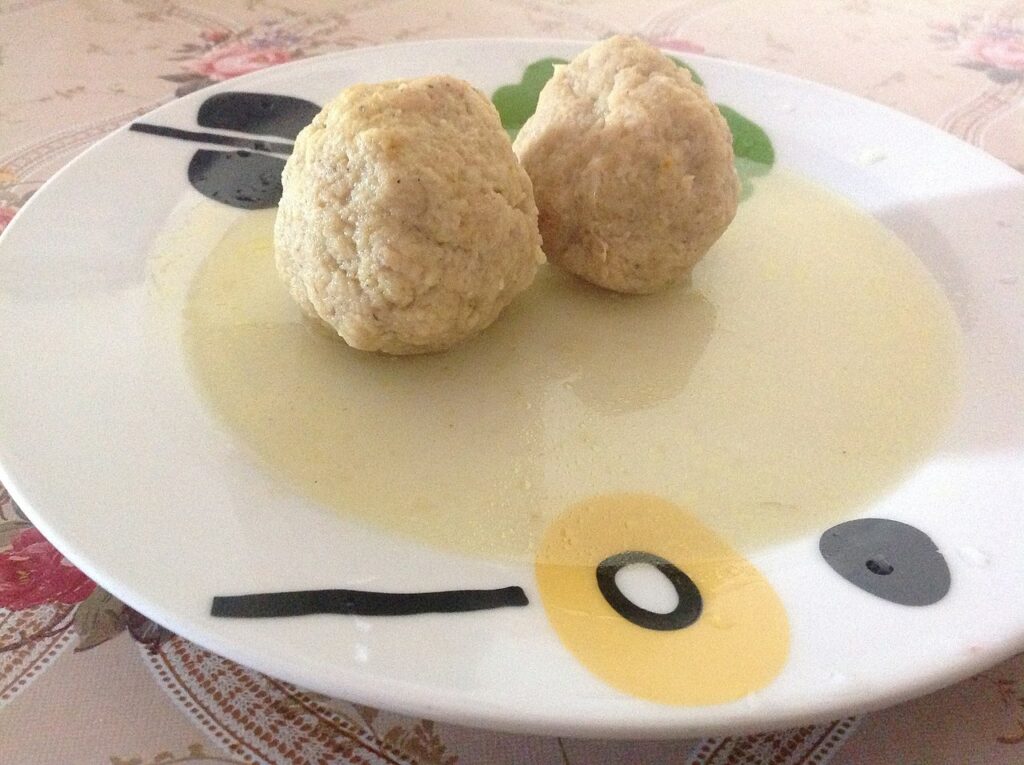
Gondi is a stew consisting of dumplings made from chicken and chickpeas which are served in chicken broth or soup. To make the dumplings, chickpea flour or ground chickpeas, ground chicken, onions and spices are mixed into a dough. The dough is allowed to rest while the broth is prepared. The dough is divided and rolled into golf ball sized rounds which are cooked in the broth for several minutes.
Gondi originated from the Iranian Jewish community where it is still significant today and is a staple of Shabbat dinners.
Tulumba/Pomba/Bamiyeh/Balaḥ ash-Shām
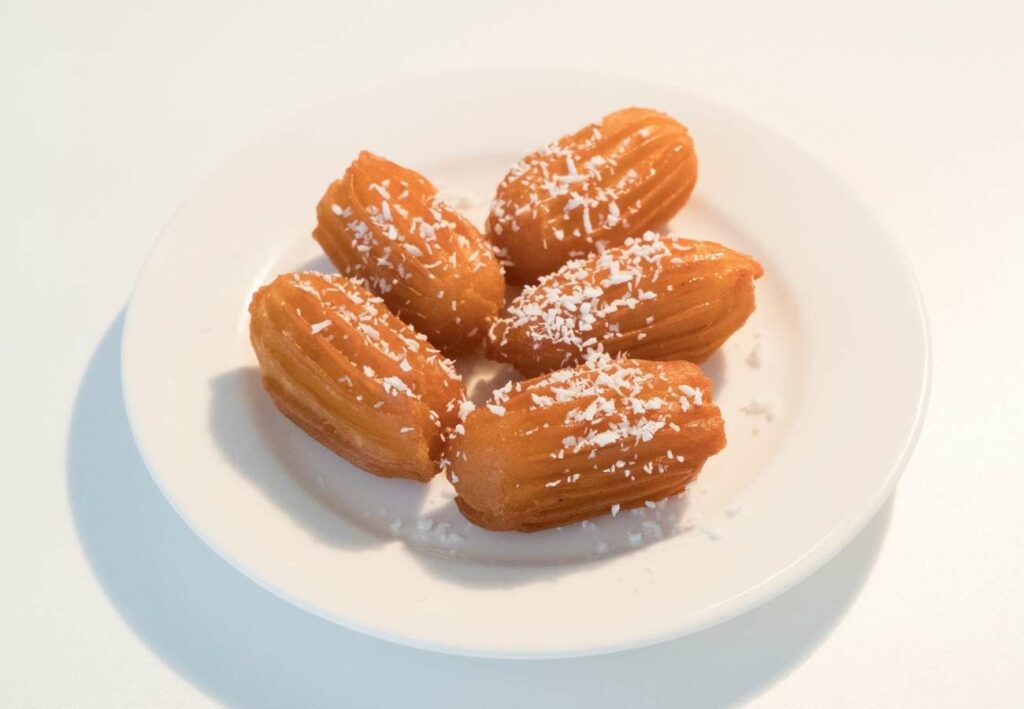
Tulumba, also known as Pomba, Bamiyeh or Balaḥ ash-Shām, is a deep-fried dessert.
It prepared using an unleavened dough lump, which is shaped as a small ovoid and includes ridges lengthways. It is shaped with the help of a pastry bag or cookie press, which has a fitting end part.
Tulumba is initially deep-fried to give this dessert a golden colour, and then sugar-sweet syrup is added on top while it’s still hot.
Qatayef/Katayef
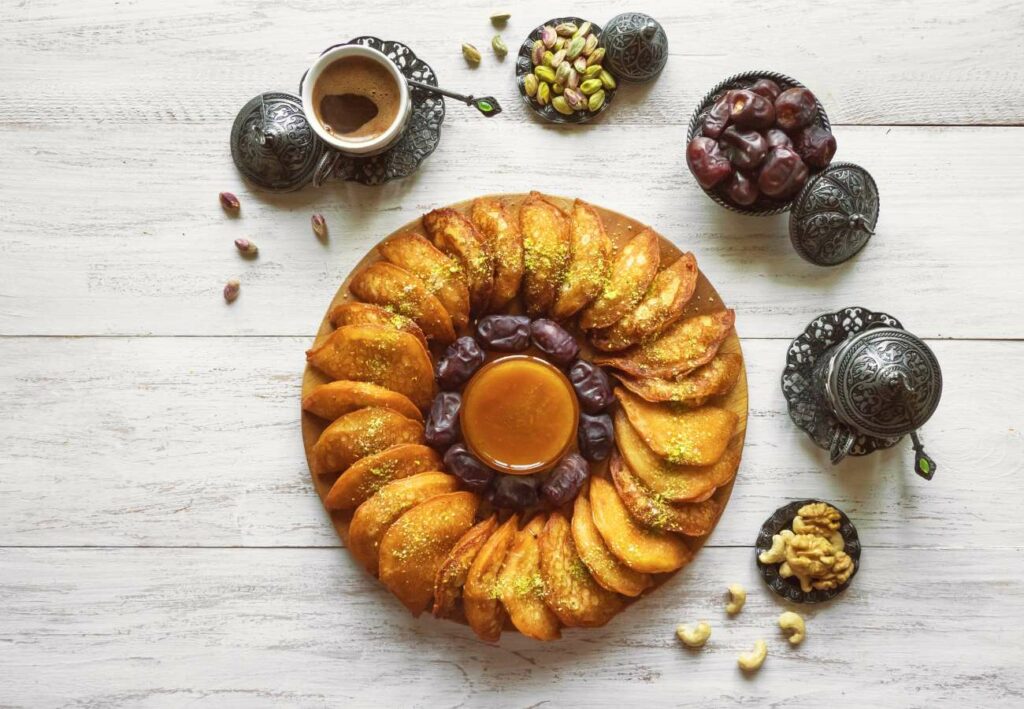
Qatayef is a kind of sweet dumpling that is stuffed with cream or nuts (typically a mixture of hazelnuts, walnuts, almonds, pistachios and raisins). Other ingredients include unsalted cheese, powdered sugar, vanilla extract and cinnamon.
This Arab delicacy is typically consumed during the month of Ramadan. Some people also define it as a folded pancake. It is usually accompanied by a hot, sweet syrup or, occasionally, honey.
Bamia
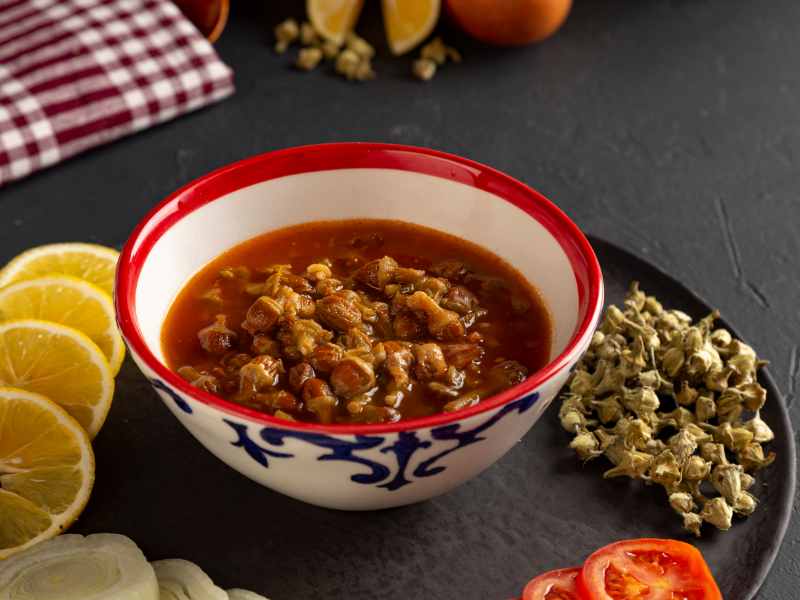
Bamia is an okra and beef stew popular throughout the Middle East. The meat and okra are cooked together with tomato paste, spices, water and pomegranate molasses to name a few of the ingredients. They are stewed in the tomato sauce until the meat becomes tender and the sauce thickens.
Zeytoon Parvardeh
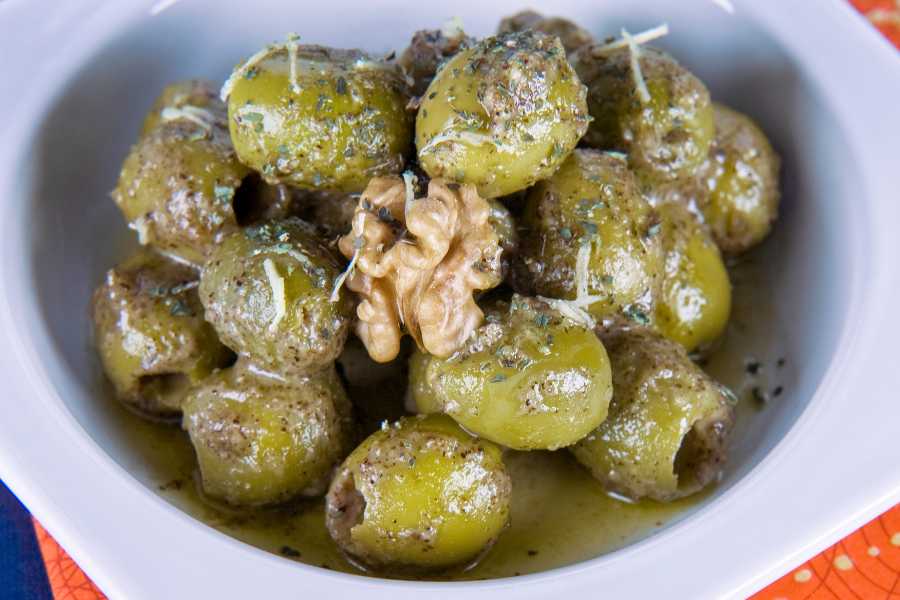
Zeytoon Parvardeh is dish of marinated olives popular in Iran. It almost always contains mint, walnuts, garlic and pomegranate molasses. All the ingredients, with the exception of the olives, are blended into a thick grainy paste. The olives are then tossed in the paste and marinated for several hours to several days.
Bastani Sonnati
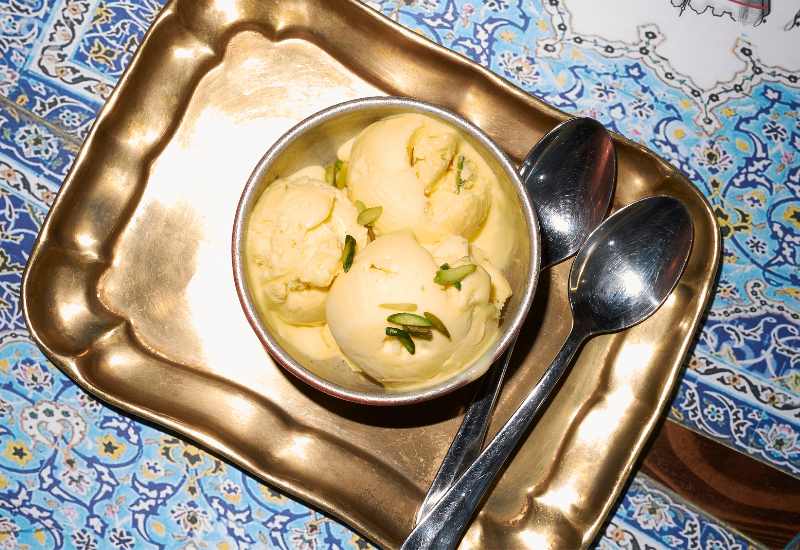
Bastani Sonnati (or simply Bastani) is a popular ice cream made with saffron, milk, rose water, eggs, vanilla, sugar, and pistachios. It is popularly known for its usage of Salep, a flour made from the tubers of wild orchid, which gives it a chewy texture.
Adas Polo
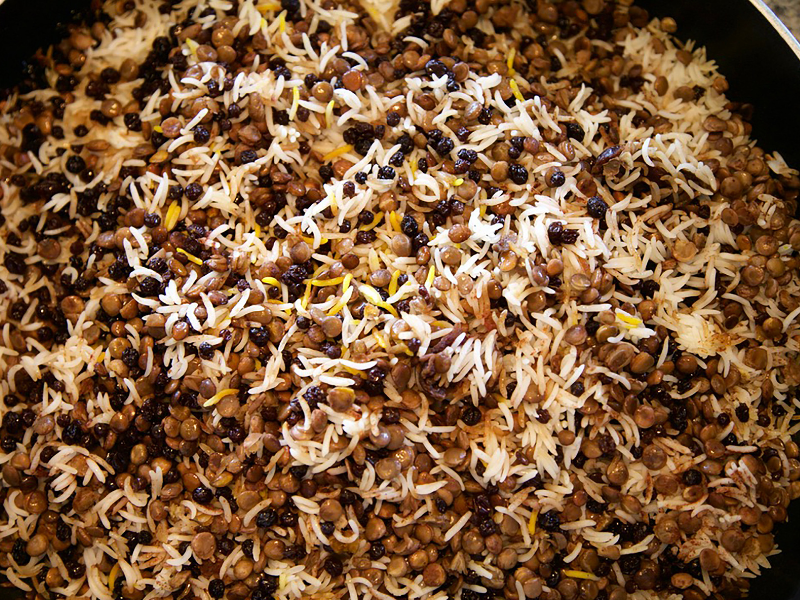
Adas Polo, also known as Persian lentil rice, is an aromatic dish that combines fragrant basmati rice with lentils and a blend of spices. The combination of lentils and rice is a traditional Persian culinary approach of pairing grains with legumes, creating a balanced and nutritious meal.
The dish holds significance in Iranian cuisine and is often served during special occasions and gatherings, such as weddings, Nowruz (Persian New Year), and other festive celebrations.
Kotlet (Meat Patties)
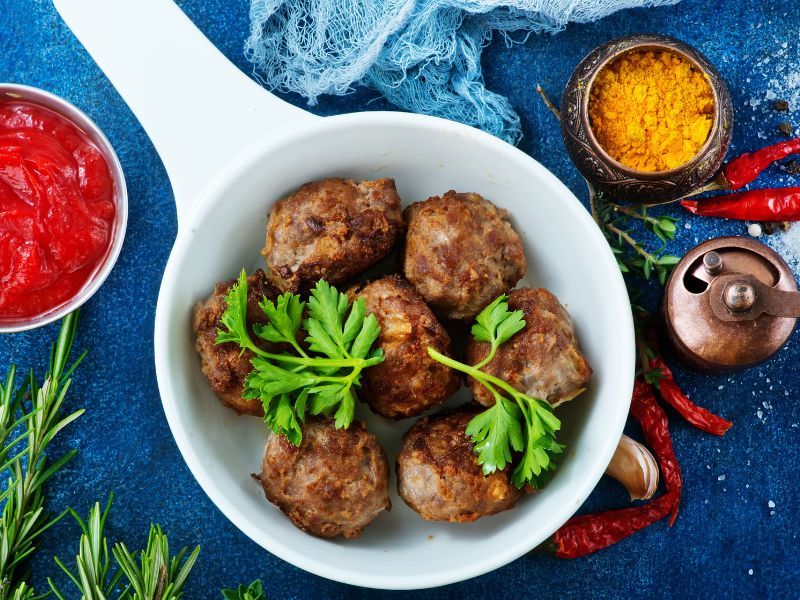
Kotlet is a comfort food made from a combination of ground meat, potatoes, onions, and different spices, that are shaped into patties and fried until golden.
The dish first become popular in the 1800s when the British introduced the Persian royal family to potatoes and they used them to make Kotlet for the first time.
Trahana
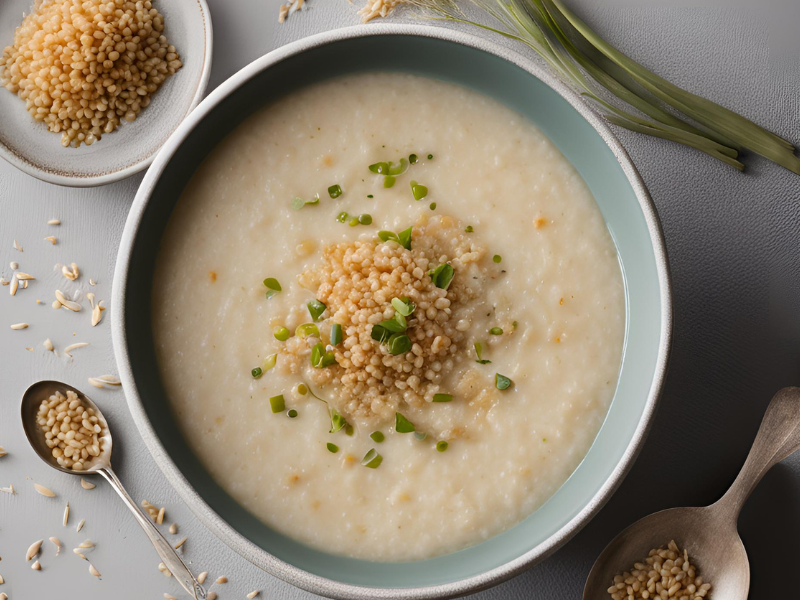
Trahana is a type of fermented grain made from cracked wheat or semolina mixed with yogurt or fermented milk that is used to make a popular soup in Balkan and Mediterranean countries.
Trahana is considered the world’s oldest fast food and is a traditional method of preserving milk and grains.

